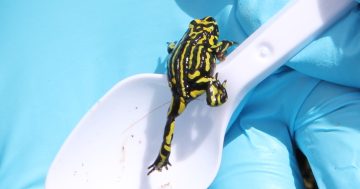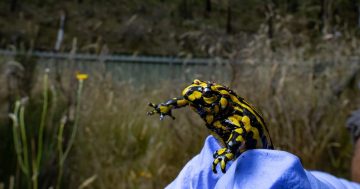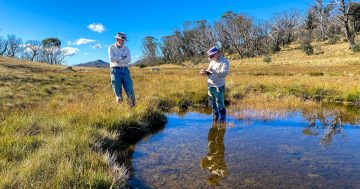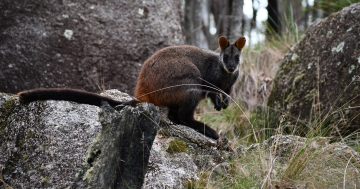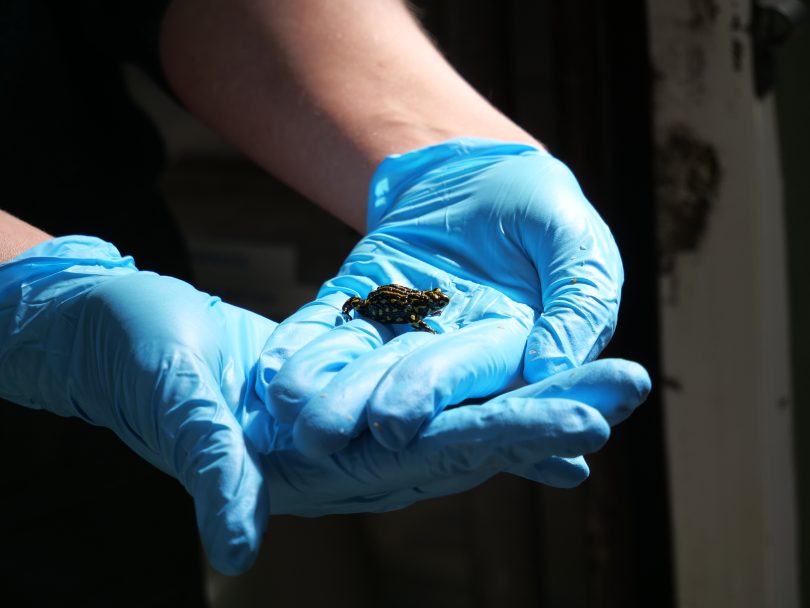
Critically endangered corroboree frogs were moved to special facilities at ANU during the fires. Photo: Supplied.
Koalas, a joey and a critically endangered species of frog have been released back into the Tidbinbilla Nature Reserve after they were forced to shelter at ANU while the Orroral Valley fire devastated the Namadgi National Park.
Purpose built tanks at the Australian National University housed the 450 corroboree frogs, which were returned to the threatened species breeding program on Thursday.
Minister for the Environment and Heritage Mick Gentleman said the damage caused to wildlife from the fire, together with the changing climate, means conservation efforts are more important than ever.
“Their safe return to Tidbinbilla is a triumph in our ongoing efforts to reintroduce the critically endangered species into the wild,” Mr Gentleman said.
“Many of the frogs that have returned today will be released to Namadgi’s sensitive alpine areas later in the year.”
Five koalas – Jed, Billa, Scully, Yellow, and Gulu – and a new joey were also moved to special facilities at ANU during the fires and will be returned to their outdoor enclosures at Tidbinbilla in the coming weeks.
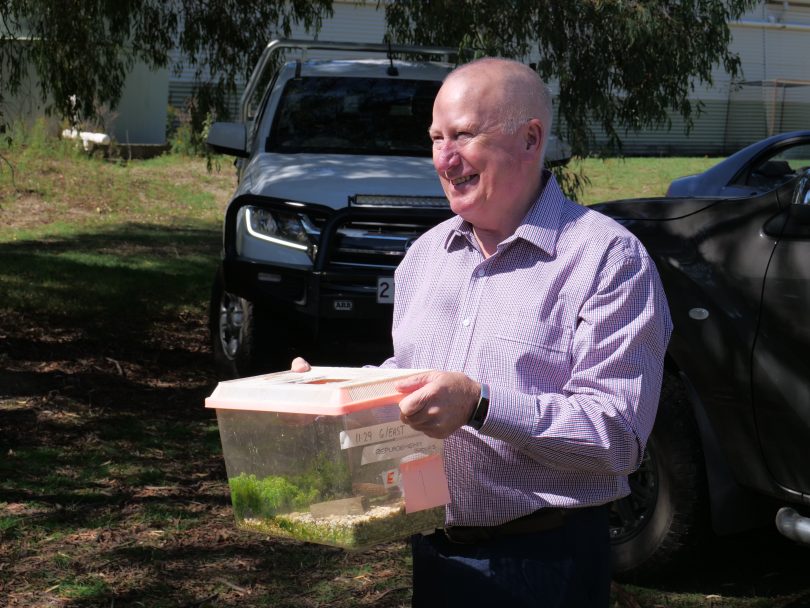
Minister for the Environment and Heritage Mick Gentleman carrying a corroboree frog. Photo: Supplied.
The wildlife program leader at the Tidbinbilla Nature Reserve, Dr Jennifer Pierson, has described this population of corroboree frogs as “a real success story of survival”.
“The species is nearly extinct in the wild and so populations like this are really what keep the species going as we try and reduce these threats in the wild,” Dr Pierson said.
“We have about 90 per cent of the corroboree frogs in captivity here so this is really irreplaceable genetic stock.”
A number of trigger points and thresholds for an evacuation were put in place in order to maintain a balance of not stressing animals by going too soon, and not endangering them by going too late.
Around 300 frog eggs were brought in to the program after the 2003 bushfires. It takes four years for the frogs to mature and reproduce, with the oldest frog in the program 17 years old.
“Now we have thousands of frogs here every year that we are able to reintroduce into the bogs and keep the population going,” Dr Pierson said.
“It is really important because if species are able to adapt to native diversity you need genetics that are saving all of these frogs and all the diversity that comes with it.”
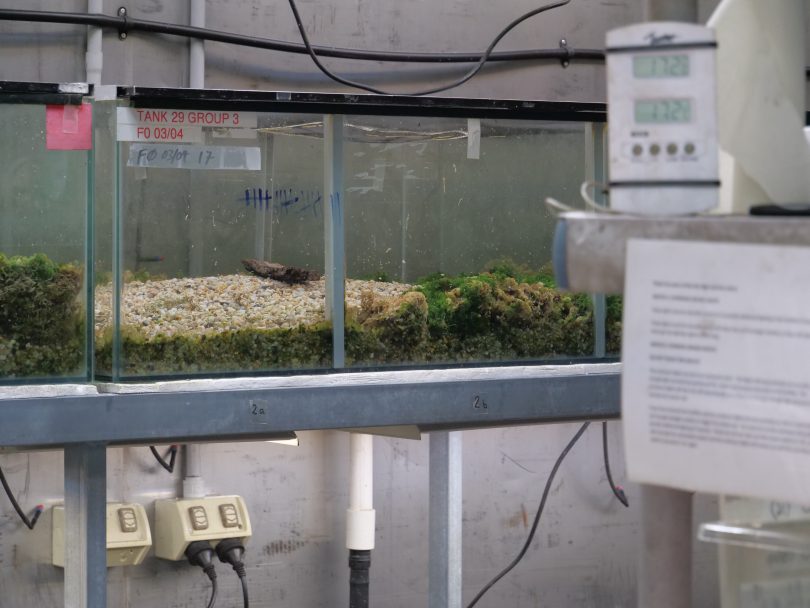
Corroboree frogs in the endangered species enclosure. Photo: Supplied.
While the animals were away, conservationists were about to work to secure the facilities and make them safer from future fire threats. Containment lines have been built around the facility, vegetation around key enclosures has been removed and a sprinkler system has been installed in holding areas to protect the animals.
Mr Gentleman said ANU had played an invaluable role in helping to save the species.
“I thank the ANU for their valuable assistance in providing suitable habitat, warm hospitality and incredible care for our threatened species. Their efforts have helped the survival of some of the ACT’s most iconic animals,” he said.
Other species have been evacuated to Mount Rothwell in Victoria and Taronga Zoo in Sydney, and will be returning in the coming weeks.
This includes 24 eastern bettongs and 24 brush-tailed rock wallabies that went to Mount Rothwell, and a four rock wallabies and seven platypuses that were evacuated to Sydney.












